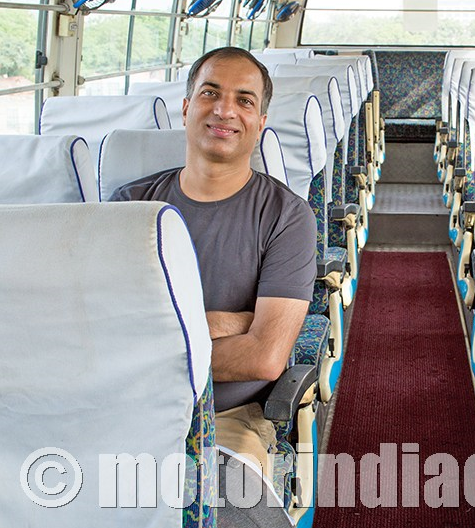The megatrend of ‘Uberisation’ referring to highly tele-networked business or processes is fast catching up in bus transportation as well. Living testimony to this transformation is the phenomenal success of Shuttl – a technology-enabled bus platform for intra-city mobility in the country. Unlike any other service provider, the company’s objective is to build a transport option that stands between the public transport systems of buses and local trains and personalised mobility like taxis. In other words, Shuttl wants to escape the clutches of typical public bus transportation found in India, and offer sophistication and seamlessness of a hired personal vehicle in buses. They have, perhaps, come out with flying colours! Shuttl has passed 10 million booking mark in April 2018, with fleet size and market penetration growing one-and-half times last year.

As the bus aggregator falls in a unique category of stakeholders in mass transportation, MOTORINDIA conversed with Mr. Amit Singh, the company’s Chief Executive and Co-Founder on key discussion pointers relating to the impacts of technology on bus transportation, changing commuter demands and preferences, and other related developments. Excerpts from the interaction are as below:
Vision for Sustainable Mobility
A people-friendly, carbon-efficient, road-space equitable, and bus-based mass transit system is critical to any city for driving long-term economic development. Major Indian cities, however, find themselves in a transportation gridlock as a result of deficit in public transport, also due to rapid and unchecked growth of car-based mobility. The outcomes are apparent – traffic snarls are terrible, causing massive economic and personal productivity loss.
A recent Boston Consulting Group estimated that traffic congestion during peak hours in four major cities costs the economy Rs. 1.47 lakh crore annually. Shuttl estimates suggest that nearly 50 work hours are wasted per person per year on roads due to traffic. Congestion losses also include fuel wastage, pollution as well as costs related to commuter stress and anxiety.
Buses as Saviours
Experts opine that an increase in bus ridership can significantly reduce congestion while high quality, reliable and safe buses can simultaneously enhance commuter wellbeing and facilitate them to shift to buses. Studies on Delhi, Mumbai, and Bangalore have provided clear evidence that a shift to buses have great potential to transform urban mobility, and limit people’s reliance on individual vehicles.
A 2012 IIM study states that dedicated bus lanes and smart traffic management systems can offset at least 50 percent of congestion. Delhi is a good example. Buses, the most popular means of road transport, cater to about 60 percent of Delhi’s total demand. The average occupancy in buses is 20 persons whereas the average occupancy in cars and two-wheelers is 2.2 and 1.2 respectively.
Shuttl’s Uniqueness
Our demand-adaptive, app and seat based, bus service business model presents an opportunity in this regard. It is critical to creating sustainable transport models. Our solution eases the shift from individual to shared mobility solutions. In doing so, Shuttl offers a win-win model to cities and citizens where all stakeholders save time, conserve resources, and reduce congestion.
However, challenges in this venture includes lack of enough buses and attitudinal change to make people shift to buses. A change in their preferences are only possible with access to reliable, safe and smart alternatives. Thus, shared bus mobility providers like us must identify the segment of people who are ready and able to shift to shared mobility given it accomplishes their travel requirements within their budgets.
For instance, the typical home-office-home commute segment is a significant part of any city’s aggregate mobility requirements. While the private car is certainly an option for top 10 percent of population, and the downtrodden 50 percent people use only public transport, there is no credible option for the 40 percent folks struck in between. This situation often causes them to shift to private vehicles. It is in this unserved segment where app-based bus services fit in.
Intelligent Transport Systems
Real-time data analytics can revolutionize urban transport systems. Ultimately, this will reduce journey times, waiting times and overall congestion. It helps us use our limited transport assets efficiently and most importantly make transport sector people friendly, safe, and demand responsive. Shuttl is also using face and voice recognition technologies to improve the safety and ride experience.